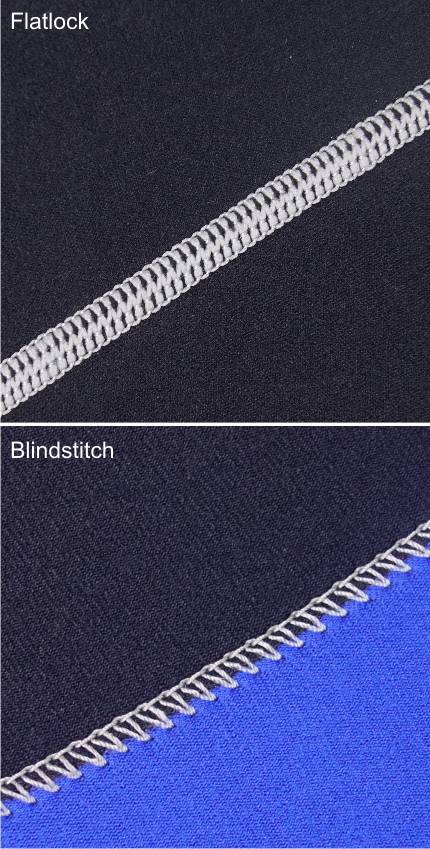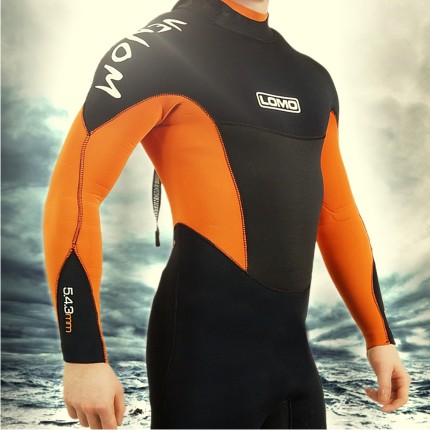
Wetsuit Stitching
Wetsuit construction terminology can be confusing. There are several different ways to stitch a wetsuit together. Here is the most common things you will come across.
1. Overlock Stitching
Overlock stitching is the LEAST EXPENSIVE and least effective form of wetsuit stitching. The Two edges of neoprene are rolled together with stitching lightly around them. This forms a ridge inside the wet suit that is both uncomfortable and it also allows water to penetrate the seam.
Lomo Watersport do not use overlock stitching on any of our wet suits.
2. Flatlock Stitching
Achieved by lapping the neoprene together, this creates a FLAT, COMFORTABLE SEAM but it also allows water to penetrate slightly. Only suitable for Wetsuits up to 3mm thick and summer conditions. Flatlock is identified by a band of interlocked thread on both sides of the suit, sometimes in contrasting thread colour for visual effect.
Flatlock stitching is used on our Summer range of wetsuits.
3. Blind Stitching
Produced by gluing and then butting together the two adjoining pieces of neoprene, followed by stitching that does not penetrate through to the other side of the neoprene. This is a watertight method of construction and is also the most comfortable option, most winter Wetsuits should be made this way.
Lomo Watersport use blind stitching on our winter wetsuits and often used double blind stitching and gluing of seams to further strengthen and seal our wetsuit seams.
4. Liquid Seams
Some wetsuits take blind stitched seams and add a further layer of rubber compound to the outside which can further improve the reduction in water penetration.

Types of Neoprene
There are also many different types of neoprene you will come across.ar.
1. Nylon 2 Neoprene
This is neoprene rubber with Nylon bonded to both the inside and outside of the material. This increases the durability of the Neoprene.
This type of neoprene can also be referred to as ‘Double Lined Neoprene’.
2. Smoothskin Neoprene
This has no coating on it and is used for internal ankle and cuff seals. It is also frequently used for swimming wetsuits where it’s smooth surface creates less drag in the water. However it is less durable than Nylon covered neoprene which makes swimming wetsuit much less wear resistant than a regular wetsuit.
3. 3mm Neoprene
This thickness is suitable for Summer wet suits.
4. 5mm Neoprene
This thickness is suitable for Autumn/ Winter wetsuits